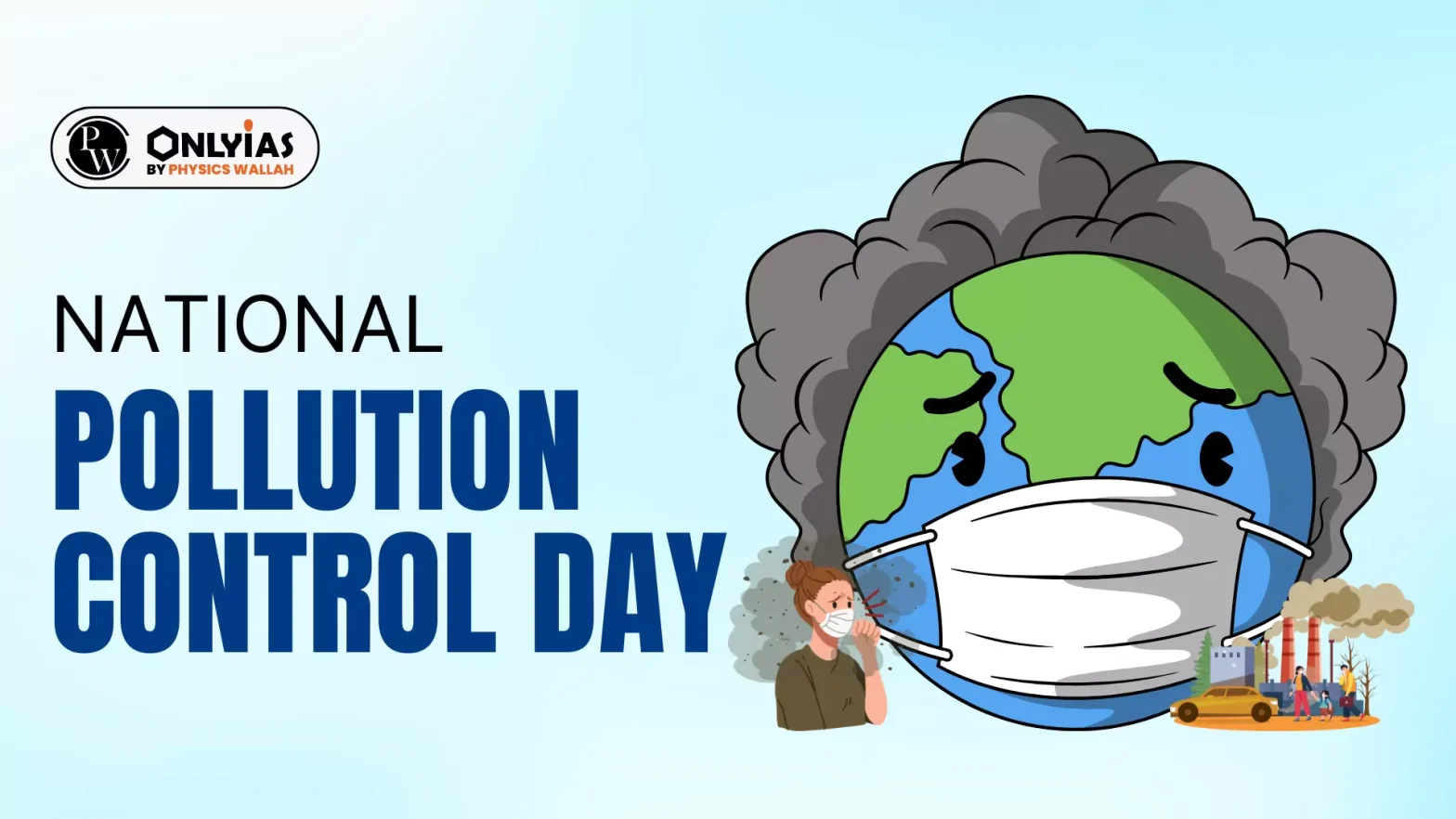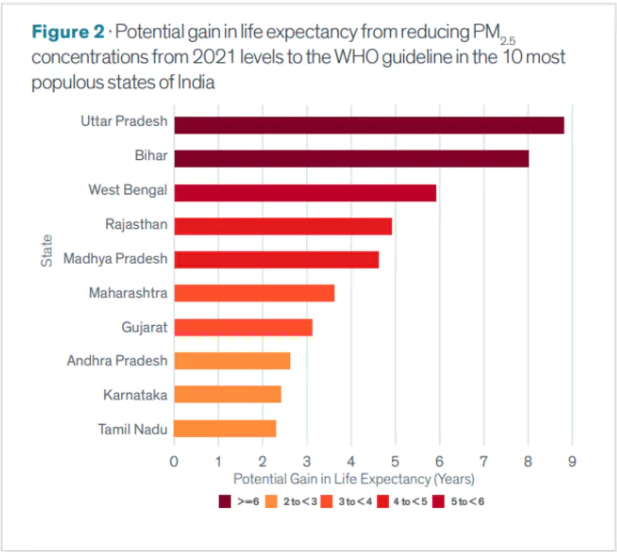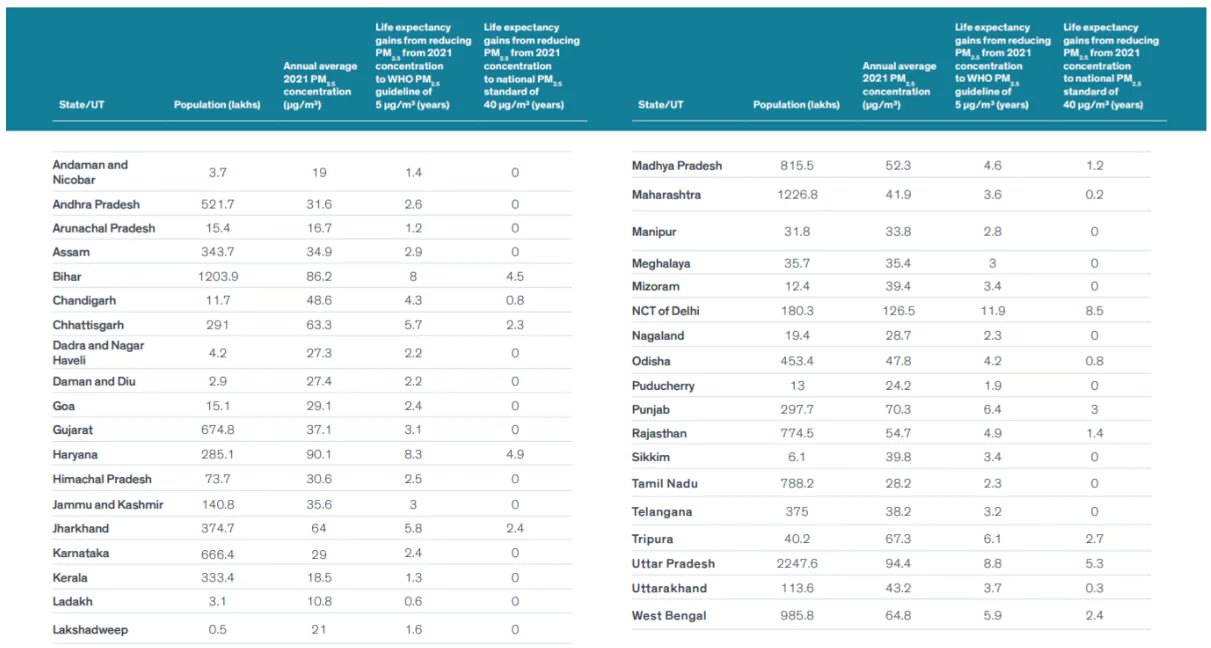Join hands to combat pollution on National Pollution Control Day 2024! Raise awareness and save lives this National Pollution Control Day 2024.

National Pollution Control Day is observed every year to raise awareness about pollution and its adverse effects on the environment and human health. This day is a significant reminder of the catastrophic Bhopal Gas Tragedy, one of the worst industrial disasters in India’s history, which occurred on the night of December 2-3, 1984. This day highlights the need for authoritarian measures to prevent such disasters and improve pollution control mechanisms in India.
National Pollution Control Day is observed on December 2 every year. The date commemorates the anniversary of the Bhopal Gas Tragedy, which occurred on December 2–3, 1984. This disaster exposed thousands of people in Bhopal, Madhya Pradesh, to toxic methyl isocyanate gas which has resulted in over 15,000 deaths and left countless others with chronic health issues.
| National Pollution Control Day Overview | |
| Aspect | Details |
| Date | December 2, 2024 |
| Significance | Commemorates the victims of the Bhopal Gas Tragedy and raises awareness about pollution control. |
| Theme | Not Announced Yet |
| Observed By | India |
| Objective | To promote awareness about pollution and encourage measures to reduce environmental degradation. |
| Key Focus Areas | Air pollution, water pollution, waste management, and industrial safety. |
| Major Initiatives | National Clean Air Programme (NCAP), Graded Response Action Plan (GRAP), and public awareness campaigns. |
| Responsible Authorities | Ministry of Environment, Forest and Climate Change, Central Pollution Control Board (CPCB). |
| Related Events | Seminars, workshops, environmental rallies, and tree-planting drives. |
The primary goals of National Pollution Control Day 2024 include:
The theme for National Pollution Control Day 2024 has not been announced yet. Generally, the theme highlights specific environmental concerns or strategies to tackle pollution. Stay updated for the official announcement.
The Bhopal Gas Tragedy, a devastating industrial accident, occurred at the Union Carbide pesticide plant in Bhopal, Madhya Pradesh, in 1984. A toxic gas, methyl isocyanate (MIC), leaked into the atmosphere and killed over 3,500 people instantly while affecting more than 500,000 individuals with long-term health issues. This incident highlighted the urgent need for stricter pollution control laws in India and better industrial safety protocols.
India has implemented many laws and policies to combat pollution and ensure environmental sustainability. Key legislations include:
Despite these efforts, the availability of reliable air quality data remains a significant challenge. Ensuring easy access to timely, actionable data is crucial for empowering citizens and policymakers to address pollution effectively.
The government of India has launched many laws and acts to control and prevent pollution in India.
| Act/Rule | Year | Objective |
| Water (Prevention & Control of Pollution) Act | 1974 | To prevent and control water pollution and maintain or restore the wholesomeness of water. |
| Water (Prevention & Control of Pollution) Cess Act | 1977 | To levy a cess on water consumption to fund pollution control efforts by state pollution control boards. |
| Air (Prevention & Control of Pollution) Act | 1981 | To prevent and control air pollution and establish air quality standards. |
| Environment (Protection) Act | 1986 | To set standards for emissions and discharges in the environment and regulate environmental pollution. |
| Manufacture, Storage and Import of Hazardous Chemical Rules | 1989 | To regulate the handling and storage of hazardous chemicals and ensure safety in chemical industries. |
| Hazardous Waste (Management & Handling) Rules | 1989 | To manage hazardous waste, including its generation, storage, transport, and disposal. |
| Manufacture, Storage, Import, Export & Storage of Hazardous Micro-Organisms and Genetically Engineered Organisms or Cells Rules | 1989 | To regulate the safe use of genetically engineered organisms and hazardous microorganisms. |
| Chemical Accidents (Emergency, Planning, Preparedness, and Response) Rules | 1996 | To deal with chemical accidents and establish mechanisms for emergency preparedness and response. |
| Bio-Medical Waste (Management & Handling) Rules | 1998 | To manage and dispose of bio-medical waste in an environmentally sound manner. |
| Recycled Plastics Manufacture & Usage Rules | 1999 | To regulate the use, manufacture, and recycling of plastics to prevent environmental hazards. |
| Ozone Depleting Substances (Regulation) Rules | 2000 | To control and regulate substances that deplete the ozone layer in accordance with the Montreal Protocol. |
| Noise Pollution (Regulation & Control) Rules | 2000 | To regulate and control noise pollution from industrial, commercial, and residential sources. |
| Municipal Solid Waste (Management & Handling) Rules | 2000 | To ensure proper management and handling of municipal solid waste. |
| Batteries (Management & Handling) Rules | 2001 | To regulate the collection, recycling, and disposal of used batteries. |
| Maharashtra Bio-Degradable Garbage (Control) Ordinance | 2006 | To regulate and manage biodegradable garbage in Maharashtra. |
| Environment Impact Assessment Notification | 2006 | To assess the environmental impact of proposed projects and activities and implement mitigation measures. |
| Municipal Solid Waste Management and Handling Rules | 2016 | To ensure sustainable and scientific management of municipal solid waste through segregation, collection, transport, processing, and disposal. |
Air pollution remains a significant concern in India. According to recent reports, the Top 10 most polluted cities in India in India based on their average PM2.5 levels:
| Top 10 Most Polluted Cities in India | ||||
| Rank | City | State | PM2.5 Level (µg/m³) | Year |
| 1 | Delhi | Delhi (NCT) | 126 | 2023 |
| 2 | Ghaziabad | Uttar Pradesh | 116 | 2023 |
| 3 | Noida | Uttar Pradesh | 114 | 2023 |
| 4 | Greater Noida | Uttar Pradesh | 112 | 2023 |
| 5 | Faridabad | Haryana | 110 | 2023 |
| 6 | Bhiwadi | Rajasthan | 108 | 2023 |
| 7 | Gurugram | Haryana | 105 | 2023 |
| 8 | Lucknow | Uttar Pradesh | 100 | 2023 |
| 9 | Patna | Bihar | 98 | 2023 |
| 10 | Muzaffarpur | Bihar | 96 | 2023 |
These cities often record poor air quality due to vehicular emissions, industrial discharges, construction dust, and crop residue burning.
India faces a severe pollution crisis as a result of its ranking as the world’s second most polluted country. Fine particulate matter (PM2.5) in the air drastically impacts public health, cutting the average Indian’s life expectancy by 5.3 years compared to the World Health Organization (WHO) guideline of 5 µg/m³. In Delhi, the world’s most polluted city, this figure rises to 11.9 years.
India’s pollution crisis is a critical public health challenge requiring urgent, sustained interventions to improve air quality and protect lives.

In 2019, India launched the National Clean Air Programme (NCAP) to address the escalating pollution crisis:
Challenges: NCAP demonstrates India’s commitment to tackling pollution, but the lack of easily accessible and timely air quality data hinders the program’s effectiveness. Improved data transparency is critical for citizen participation and accountability.

Delhi exemplifies the severity of India’s pollution crisis:
In 2024, 18 out of 38 air quality monitoring stations in Delhi reported AQI levels in the “severe” category. Low wind speeds and temperature inversions are key factors worsening the crisis.
National Pollution Control Day 2024 is especially significant as the world is suffering from climate change and environmental degradation. India’s efforts to combat pollution align with global initiatives like the Paris Agreement, which aims to reduce greenhouse gas emissions and limit global warming.
Every individual has a role to play in controlling pollution. Simple actions can make a big difference, such as:
National Pollution Control Day 2024 acts as a reminder of the devastating consequences of neglecting environmental safety. By observing this day, we not only honour the victims of the Bhopal Gas Tragedy but also reaffirm our commitment to creating a sustainable and pollution-free environment.
Pollution is a global crisis that demands collective action. National Pollution Control Day 2024 is a crucial step in raising awareness and driving change. Through strict laws, innovative technologies, and public participation, India can combat pollution and pave the way for a cleaner and healthier future.
Ready to boost your UPSC 2025 preparation? Join PW’s UPSC online courses today!
The theme for National Pollution Control Day 2024 has not been announced yet.
National Pollution Control Day is observed annually on December 2 to honour the victims of the Bhopal Gas Tragedy and spread awareness about pollution control.
National Pollution Control Day in India on December 2 and World Environment Day on June 5 are key observances focusing on pollution globally.
It is observed every year on December 2.
The objectives are to raise awareness, advocate for stricter pollution control laws, and honour the victims of the Bhopal Gas Tragedy.
Measures like the Graded Response Action Plan (GRAP), promoting electric vehicles, and reducing stubble burning have been implemented to address Delhi pollution.
<div class="new-fform">
</div>
